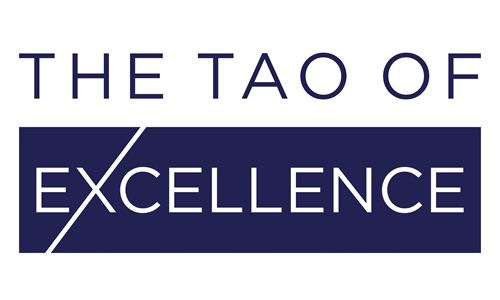As we create, we hone our skills. During this process we begin to identify where we can improve or even innovate, and this relies on failure. As systems engineer Martin Coe describes, “true learning can only transpire when failure occurs, its root cause is discovered, and the resulting knowledge is applied to improving device design.”[1]
In an industry as complex and fast-paced as the medical devices sector, it is challenging to continually improve products and processes whilst leaning in to failures as a way to drive change—creating safer, more efficient and more cost-effective solutions.
Yet, when Sir Dave Brailsford became head of British Cycling in 2002 the team had just one gold medal in its 76-year history. By 2008 at the Beijing Olympics, his squad had won 7 of the 10 gold medals and matched this success at the London Olympics in 2012. In an interview Brailsford explains that as a team they “identified the gap between where they were and where they needed to be” and then applied a principle of “continuous improvement.”[2]
In this respect, and as described by Coe, “thoroughness in observation, data capture, and drawing conclusions from evaluation results is vital to achieving full design maturity.”[3] So, this scientific diligence and statistical analysis could be applied to any process—whether in manufacturing or business practices—to identify issues and find the opportunities to improve.
As Healthcare Finance reports, a number of companies in the medical devices industry are benefiting from the improvement methodology of Six Sigma. This focuses on how processes are organised and promotes an environment of open communication across departmental areas. Or as Chuck Spurr, the chief information officer at Shields Health Care Group, puts it “everybody’s in the same room.”[4]
This emphasis on statistical analysis and following a prescribed structure re-centres the responsibility for issues on the performance of processes rather than people. As Brailsford found, “perhaps the most powerful benefit is that it creates a contagious enthusiasm. Everyone starts looking for ways to improve” and in this way “everyone is committed […] there’s mutual accountability, which is the basis of great teamwork.”[5]
By clearly identifying issues that needed fixing and enabling and empowering people, the Shields Health Care Group managed to increase its patient collections by 622% over five years, and saved the company nearly $6 million through its Six Sigma projects.
In another example, Anderson Regional Health Medical Center implemented Six Sigma to turnaround a $15 million shortfall. This move established a data stream for the company that, combined with workflow changes, resulted in a $2 million positive margin for the fiscal year 2017. “We feel more strategic and agile, employees have ownership in their individual roles, we have continuous monitoring of financial status” said revenue cycle director Kevin Adams.[6]
And this brings us to another essential quality set out by Brailsford. “You have to identify the critical success factors and ensure they are in place, and then focus your improvements around them.”[7]
In a market report published last year, KPMG specified that for success in 2030 “medical device companies will need to react quickly to market opportunities and move at ‘deal speed’ to realise value from growth transactions.” In a dynamic environment, clear and effortless processes will be key to successful business strategies.
Additionally, “protecting and creating market share […] will involve relationships based on trust, where medical device companies are not just servicing their customers but advising them along each step of their individual care journey.” In light of the recent Implant Files investigation, rebuilding trust by the continuous improvement of processes and regulations will be crucial any company’s future. “Staying ahead means offering value beyond the device and solving healthcare’s problems—rather than contributing to them.”[8]
By attending a Yellow Belt course with Tao Excellence your team will learn to identify opportunities to improve the performance of your organisation. This method is built to significantly improve products, services and processes, and sustain that continual improvement to drive the creation of safer devices and practises, greater efficiency, ease and financial gains.
Participants on this 2-day course will learn how to utilize the key principles of Six Sigma to improve their own day-to-day work processes and find the data and expertise for your organisation as a whole. With the complexities of the healthcare industry, this is the best way “to get the myriad units within provider organizations working as one.”[9]
Phone
+41 52 685 51 65
Email
[email protected]
Did you like this article? Follow us on LinkedIn and Twitter!
[1] Med Device Online, Martin Coe, 9 January 2019 https://www.meddeviceonline.com/doc/separating-optimizing-device-evaluation-and-design-verification-a-key-to-medtech-success-0001
[2] Eben Harrell, Harvard Business Review, 30 October 2015, https://hbr.org/2015/10/how-1-performance-improvements-led-to-olympic-gold
[3] Med Device Online, Martin Coe, 9 January 2019 https://www.meddeviceonline.com/doc/separating-optimizing-device-evaluation-and-design-verification-a-key-to-medtech-success-0001
[4] Henry Powderly, Healthcare Finance, 19 February 2017 https://www.healthcarefinancenews.com/news/secret-shields-success-six-sigma
[5] Eben Harrell, Harvard Business Review, 30 October 2015, https://hbr.org/2015/10/how-1-performance-improvements-led-to-olympic-gold
[6] Henry Powderly, Healthcare Finance, 19 February 2017 https://www.healthcarefinancenews.com/news/secret-shields-success-six-sigma
[7] Eben Harrell, Harvard Business Review, 30 October 2015, https://hbr.org/2015/10/how-1-performance-improvements-led-to-olympic-gold
[8] KPMG International, 4 January 2018, Medical devices 2030, https://assets.kpmg/content/dam/kpmg/xx/pdf/2017/12/medical-devices-2030.pdf
[9] Henry Powderly, Healthcare Finance, 19 February 2017 https://www.healthcarefinancenews.com/news/secret-shields-success-six-sigma


